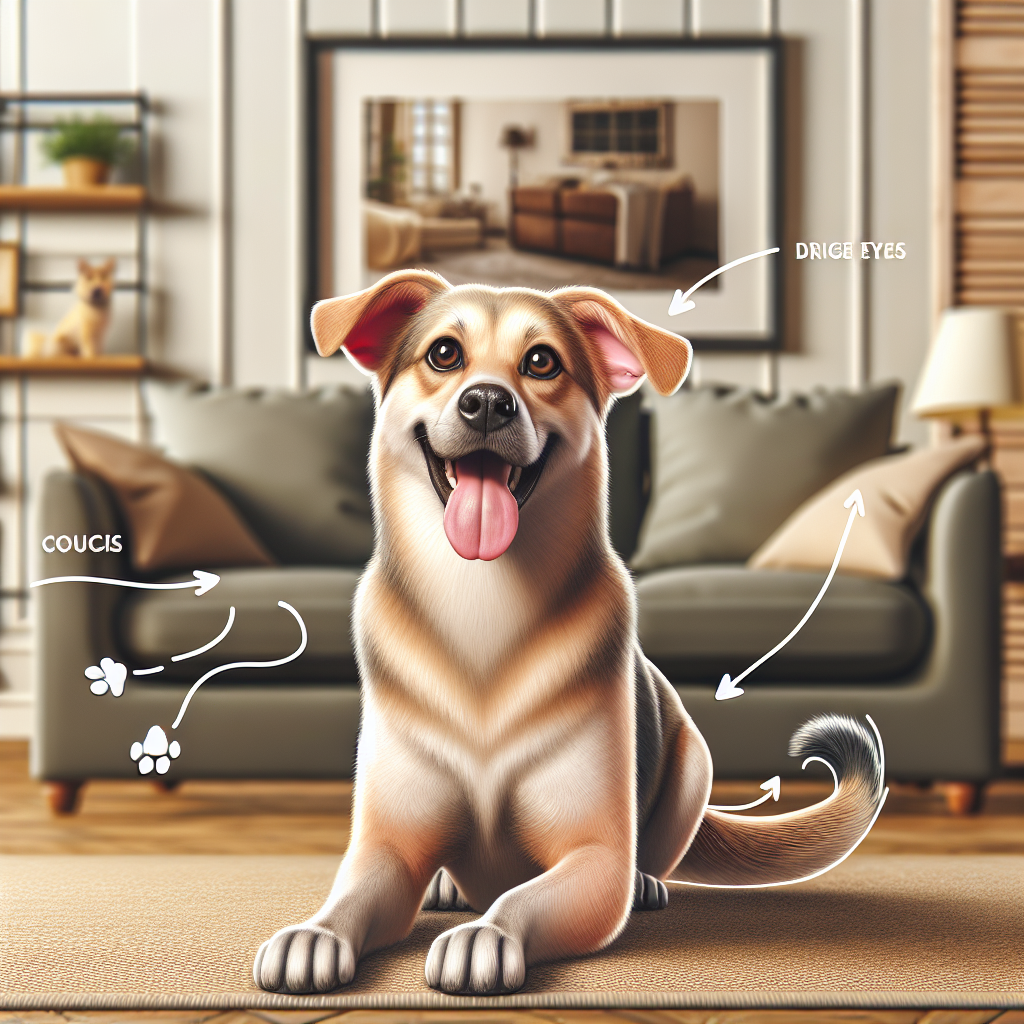Understanding the Flea Life Cycle

Hey there, fellow pet lovers! If you’re anything like me, you’ve probably found yourself scratching your head—literally and figuratively—over fleas. These tiny critters seem to pop up out of nowhere, and before you know it, they’re everywhere. So, let’s dive into understanding the flea life cycle. It’s the first step to getting a handle on how to break the flea life cycle and put an end to the madness.
Fleas are sneaky little buggers. They have a knack for multiplying faster than you can say “infestation.” But here’s the deal: knowing their life cycle is key to controlling them. Fleas go through a pretty wild transformation, and it all starts with an egg. Picture this: a single female flea can lay up to 50 eggs a day. That’s a lot of potential fleas hopping around your house. The eggs don’t just stay on your pet, though. Nope, they fall off and settle into carpets, bedding, and all those cozy spots in your home.
Once the eggs hatch, they become larvae. These little guys avoid light like it’s the plague and burrow into carpets and cracks. They feed on organic matter, which is a fancy way of saying “whatever gross stuff they find lying around.” After that, they spin themselves into cocoons, becoming pupae. This is where it gets tricky. Pupae can hunker down for weeks, just waiting for the right moment to emerge as adult fleas. It’s like they’re planning a surprise party, only it’s a flea infestation spread instead of balloons and cake.
The Flea’s Four Life Stages
Now, let’s break this down into the flea’s four life stages. Understanding fleas means getting to know each stage and how they fit into the grand flea scheme.
1.
Eggs
: As I mentioned, fleas lay eggs like it’s going out of style. These eggs are smooth, almost like tiny grains of rice, and they’ll roll right off your pet into your home. So, even if you’ve cleaned your pet, those eggs might still be lurking around.
2.
Larvae
: Once those eggs hatch, they turn into larvae. Picture a tiny worm, about 1/4 inch long. They avoid light and dive deep into carpets, feeding on flea dirt (yep, flea poop) and other organic debris. Lovely, right?
3.
Pupae
: After the larvae are full and happy, they wrap themselves in silk cocoons. These pupae are like tiny fortified bunkers. They can stay dormant for weeks, waiting for the perfect time to emerge. It’s like they’re in a flea witness protection program.
4.
Adults
: Finally, the adults emerge, hungry and ready to latch onto a host. That’s usually your pet, but they’ll bite humans too if they’re desperate. And the cycle starts all over again.
Breaking the flea life cycle means targeting each of these stages. It’s a bit like playing whack-a-mole, but with a little persistence, you can outsmart them.
How Fleas Spread Quickly
Now, let’s talk about how fleas spread quickly. It’s a bit of a horror story, really. One minute you’re living your life, and the next, you’re knee-deep in a flea infestation spread. So, how does it happen so fast?
Fleas are like the ninjas of the insect world. They can jump up to 100 times their own height. Imagine jumping over a five-story building—that’s the kind of acrobatics we’re dealing with. This ability allows them to move from host to host in the blink of an eye.
Let’s say you take your dog to the park. They meet another dog, and bam! Fleas can hitch a ride back to your house. Once they’re in, they lay eggs like it’s going out of style, and before you know it, your home is a flea paradise. Fleas can also spread through other animals, like squirrels or raccoons, that might visit your yard. It’s a never-ending cycle unless you take action.
Identifying Fleas in Your Home
Alright, so how do you go about identifying fleas at home? It starts with keeping your eyes peeled for signs. Fleas are tiny, but they leave a trail of clues.
First, watch your pets. Are they scratching more than usual? Do they seem restless or uncomfortable? Fleas are usually the culprits. You might also spot flea dirt, which looks like tiny black specks, on your pet’s skin or in their bedding. Here’s a trick: put some of those specks on a wet paper towel. If it turns red, you’ve got flea dirt. Gross, but effective.
Next, check your home. Fleas love to hide in carpets and upholstery, so grab a flashlight and get down to their level. You might see the little critters hopping around. If you’re still not sure, use a flea comb on your pet. These combs have fine teeth that can catch fleas and their dirt. It’s a simple but effective tool in your flea-fighting arsenal.
The Importance of Breaking the Cycle
Now that we’ve got a handle on identifying fleas, let’s talk about the importance of breaking the cycle. This is the big one, folks. Breaking the flea life cycle is crucial if you want to banish these pests for good.
Here’s the deal: you can’t just treat your pet and call it a day. Fleas are persistent, and if you miss even one stage of their life cycle, they’ll come back with a vengeance. You’ve got to tackle them at every stage—eggs, larvae, pupae, and adults.
Start by treating your pet with a vet-recommended flea control product. These treatments are designed to kill fleas at multiple stages, giving you a fighting chance. Next, clean your home thoroughly. Vacuum carpets, wash bedding in hot water, and consider using a flea spray for your home. It might seem like a lot, but trust me, it’s worth it.
Breaking the flea life cycle isn’t easy, but with a bit of elbow grease and determination, you can do it. Remember, you’re not just fighting for a flea-free home—you’re fighting for your pet’s comfort and health. So, roll up your sleeves, grab your vacuum, and let’s show those fleas who’s boss.
Thanks for sticking with me through this flea-filled journey. I hope you’re feeling a bit more empowered to take on these pesky pests. Remember, you’re not alone in this fight. We’ve all been there, and with a little persistence, you’ll come out on top. Good luck, and give your furry friend a scratch behind the ears for me!
Understanding the Different Types of Flea Treatments
Hey there, fellow pet lovers! We’re diving headfirst into the world of flea treatments. You might be wondering, “What in the world should I use to tackle these pesky critters?” Well, sit tight, ’cause I’m here to unravel the types of flea treatments for pets. There are a bunch on the market, from topical applications to oral medications and even collars. Each one’s got its own magic, but not all work the same.
Topical treatments are those little tubes you squeeze onto your pet’s back. They’re pretty popular because they’re easy to apply once a month. They kill fleas by spreading through your pet’s skin oils. But, there are also oral meds—those are nifty little pills that work from the inside out. They can start killing fleas fast, sometimes within hours.
Then you’ve got flea collars. These are like giving your pet a shield that lasts for several months. Some folks swear by them, but others find them less effective. And, of course, there are sprays and shampoos. They can give instant relief but might not be the best for long-term control.
Each type has its pros and cons, and the best choice depends on your pet and situation. Don’t forget to consider your pet’s age, weight, and health. It’s not one-size-fits-all, so a chat with your vet is always a good idea. They can help you choose the right warrior for your flea battle.
How to Use Flea Preventatives Safely
Now, let’s talk safety. No one wants their furry friend in harm’s way, right? Safe flea preventatives for dogs and cats are a must. The key is reading labels like they’re your new favorite book. Seriously, those instructions are gold.
Many flea treatments are safe, but using them right is crucial. Overdose or misuse can lead to health issues. For instance, never use dog flea treatments on cats. It sounds like common sense, but it happens more often than you’d think. Some ingredients in dog products are toxic to cats.
When applying a topical treatment, make sure you hit the right spot. Usually, it’s between the shoulder blades. You don’t want your pet licking it off. Yuck! And with oral meds, ensure you’re giving the correct dose. They often go by weight, so you might need to pop your pet on the scale.
Remember, more isn’t better. Stick to the recommended amount. And hey, if you’re unsure, your vet is just a phone call away. They’re your safety net for navigating this stuff. Safe use of flea preventatives is a big step in breaking the flea life cycle.
The Role of Regular Cleaning in Flea Control
Ah, cleaning. Not the most glamorous job, but when it comes to fleas, it’s your best buddy. Fleas can hide in carpets, bedding, and even your couch. Regular cleaning is crucial for flea control.
Vacuuming is your first line of defense. Fleas love to lay eggs in carpets, so frequent vacuuming can help pick up eggs before they hatch. Aim for at least once a week, but if you’re in the middle of a flea fight, twice a week is even better. Don’t forget to empty the vacuum bag outside—trust me on this one!
Washing pet bedding in hot water is another must. It kills any fleas or eggs hiding out. And while you’re at it, give your own bedding a wash too. Fleas aren’t picky and will hop onto anything warm and cozy.
Cleaning tips for flea control also include steam cleaning carpets and upholstery. The heat can kill fleas at all life stages. It’s a bit of a chore, but when you’re staring down a flea infestation, it’s worth it.
Managing Outdoor Spaces to Prevent Flea Infestation
Alright, let’s head outside. Fleas don’t just cozy up inside. They love a good yard, especially if you’ve got shady spots and tall grass. Managing outdoor spaces is key to preventing flea infestations.
Start by keeping your grass short. Fleas thrive in long grass, so regular mowing helps. Also, clear out debris like leaves and twigs. These create perfect hiding spots for fleas.
Consider using outdoor flea prevention tips like nematodes. These are tiny worms that eat flea larvae. You can buy them online, and they’re safe for pets and plants. They’re like little garden warriors against fleas.
If your pet spends a lot of time outside, try limiting where they roam. Fenced areas or patios can keep them away from flea-prone spots. And if you’ve got neighborhood critters passing through, like raccoons or squirrels, try to discourage them. They can bring fleas into your yard.
Outdoor management is a huge help in breaking the flea life cycle. It’s all about making your yard less inviting to these pests.
Monitoring and Adjusting Your Flea Prevention Plan
Now, onto the final piece of the puzzle—monitoring and adjusting your flea prevention plan. Fleas can be pretty stubborn, so staying on top of your game is crucial.
Keep an eye on your pet. If they’re scratching more than usual or you spot flea dirt, it might be time to tweak your plan. Sometimes treatments lose effectiveness, or fleas can become resistant. Monitoring flea prevention effectiveness is key to staying one step ahead.
Consider setting reminders for treatments. It’s easy to forget, but consistency is important. A missed dose can give fleas a chance to bounce back.
If you’re still seeing fleas after a few weeks, talk to your vet. They might suggest switching products or trying a combination approach. Breaking the flea life cycle sometimes takes a few tries.
And remember, you’re not alone in this battle. You’ve got the knowledge and the tools to tackle these pesky critters. Thanks for sticking with me on this journey. Good luck, and keep up the good fight against those fleas!
Understanding the Role of Flea Treatments
Alright, folks, let’s dive into the world of flea treatments. I know, I know. It might not be the most glamorous topic, but if you’ve ever had to deal with a flea infestation, you know how crucial it is to get it right. So, let’s chat about flea treatment effectiveness. These little buggers are tough cookies, and breaking the flea life cycle requires a solid plan.
Now, when we say “flea treatment,” we’re talking about spot-on treatments, oral medications, and those good ol’ flea collars. They’re the frontline soldiers in this battle. But here’s the thing: not all treatments are created equal. Some work like a charm, while others, well, they’re about as useful as a chocolate teapot. You gotta find what works for your furry friend. Trial and error, maybe? Sure, it might take some time, and perhaps a few dollars here and there, but when you see your pet finally scratching a little less, it’s worth it.
Have you ever noticed how some treatments promise the world and deliver, well, not much? That’s why it’s important to keep an eye on how effective they really are. You wanna make sure you’re not just throwing money down the drain. And for the love of all things furry, always check with your vet. They can give you the lowdown on what’s hot and what’s not in the world of flea treatments.
Natural Remedies to Interrupt the Flea Cycle
Let’s switch gears a bit and talk about something a bit more earthy: natural flea remedies. Now, before you roll your eyes, hear me out. Sometimes, going natural can be a game-changer. If you’re anything like me, you love the idea of using what’s in your pantry to tackle those pesky fleas.
Ever tried using a bit of apple cider vinegar? It’s like a miracle in a bottle. Just a splash in your pet’s water or a diluted spray can help deter those fleas. And don’t even get me started on diatomaceous earth. Sprinkle some of this around your home, and it’s game over for fleas. It’s all about finding what fits into your routine and feels right for you and your pet.
But remember, while natural remedies can be fantastic, they’re not always the end-all-be-all solution. Sometimes, they need a little help from their synthetic friends. Mixing and matching is perfectly fine. It’s like making the perfect cocktail to break the flea life cycle. Give it a shot, and see what combo gives you that sweet relief from scratching.
The Importance of Consistent Cleaning
Now, let’s talk about something we all know we should do but might not always get around to: consistent cleaning for fleas. Yep, it sounds like a drag, but trust me, it’s a game-changer. Imagine this: you’ve just spent your hard-earned cash on flea treatments, and your pet seems happier. But those sneaky fleas are still lurking in your carpets and upholstery, ready to strike again.
You know what they say, “Cleanliness is next to flea-freeness.” Or something like that. Regular vacuuming can work wonders. And washing your pet’s bedding? It’s more important than you think. I once met a lady who swore by washing her dog’s bed every week. She hadn’t seen a flea in years. Coincidence? I think not.
Now, I get it. Life’s busy, and sometimes cleaning gets pushed down the to-do list. But here’s a thought: set a timer, make it a family chore, or even reward yourself afterward. Whatever it takes to make it a habit. Because, in the end, consistent cleaning can be your best ally in breaking the flea life cycle.
Monitoring and Adjusting Your Approach
Okay, so you’ve got your treatments, your natural remedies, and you’re cleaning like a pro. But how do you know if it’s all working? That’s where monitoring flea infestations comes in. It’s like being a detective, but with more fur and fewer trench coats.
Keep an eye on your pet. Are they scratching less? Do they seem happier? What about those telltale little flea dirt specks? Less of that around? Great! But if not, don’t panic. It just means it’s time for adjusting flea control methods. Maybe the treatment needs tweaking, or perhaps a new natural remedy should be added to the mix.
And let’s not forget about reaching out to your vet. They can offer guidance and support, helping you navigate the world of flea control without losing your mind. It’s all about finding that sweet spot where your pet is comfortable, and your home is flea-free. It takes time, but you’ll get there.
Supporting Your Pet’s Health and Comfort
Finally, let’s wrap up with what really matters: your pet’s health and comfort. At the end of the day, that’s what this whole flea-fighting journey is about. You want your pet to feel good, and you want them to be free from the itchiness and discomfort of fleas.
So, how do you support pet health and flea prevention? Well, a good diet is a start. Healthy pets are better equipped to handle flea infestations. And don’t forget about regular grooming. It’s not just about looking pretty—it’s about keeping an eye on any sneaky fleas trying to make a home in your pet’s fur.
Comfort for pets with fleas is crucial, too. Imagine having a constant itch you can’t scratch. It’s enough to drive anyone mad. Make sure your pet has a comfy place to rest and maybe even a soothing bath now and then. Trust me, a little TLC goes a long way.
Alright, folks, there you have it. Breaking the flea life cycle ain’t easy, but with the right tools and a bit of grit, you’ll get there. Thanks for hanging out with me and diving into this not-so-glamorous but oh-so-important topic. Good luck, fellow pet lovers, and may your homes be flea-free!
Quick Takeaways:
Alright, folks, let’s wrap this up with some quick takeaways on how to break the flea life cycle. First off, understanding fleas and their life cycle stages is key. These little buggers go through four stages: egg, larva, pupa, and adult. Knowing this helps in targeting each stage effectively. Fleas multiply like there’s no tomorrow, so acting fast is crucial to prevent a full-blown flea infestation spread.
Now, when it comes to flea treatments for pets, you’ve got options. From spot-on treatments to oral medications, each serves a purpose. It’s about finding the right match for your fur baby. Remember, safety first, folks! Always check if the flea preventatives are safe for your dogs and cats.
Cleaning might not be your favorite chore, but it’s your ally in this fight. Regular vacuuming and washing pet bedding can make a world of difference. And don’t forget your yard. Outdoor flea prevention tips include keeping your grass short and using pet-safe insecticides.
Monitoring flea prevention effectiveness is another crucial step. Keep an eye on your pet and your home, and be ready to adjust your methods if necessary.
In the end, breaking the flea life cycle takes persistence and a bit of strategy. But with the right approach, you can win this battle. So, hang in there!
FAQs:
1.
How can I identify fleas at home?
Spotting fleas at home can be tricky. They’re tiny and quick! But look for telltale signs like flea dirt (tiny black specs on your pet’s skin) or excessive scratching. Check your pet’s favorite spots, like their bed or the couch. A flea comb can help catch these critters in action. Once you know they’re around, you can start figuring out how to break the flea life cycle.
2.
What are the effective flea treatments for pets?
There are several types of flea treatments for pets, each with its pros and cons. Spot-on treatments are popular because they’re easy to apply and effective for a month. Oral medications work from the inside out, killing fleas fast. Flea collars offer long-term protection, while shampoos provide immediate relief. Choose what fits your pet’s needs and lifestyle, and always consult your vet.
3.
How do I ensure flea preventatives are safe for my pets?
Safety is the name of the game when using flea preventatives. Always read labels carefully and follow the instructions. Some products are for dogs only or cats only, so avoid mix-ups. Consult your vet if you’re unsure. It’s crucial to know that some natural flea remedies might not be enough for severe infestations. Stick to vet-approved solutions.
4.
What cleaning tips can help in flea control?
Consistent cleaning is your best weapon in flea control. Vacuum your home regularly, focusing on carpets and upholstery. Wash your pet’s bedding in hot water weekly. Consider using a steam cleaner on floors and furniture. These steps help in breaking the flea life cycle by removing eggs and larvae. A clean home is a less inviting place for fleas to multiply.
5.
How do I monitor and adjust my flea control methods?
Keep tabs on flea control effectiveness by checking your pet and home regularly. If you notice fleas despite treatment, it might be time to switch things up. Maybe try a different product or add another layer of defense, like an outdoor treatment. Stay flexible and proactive. This vigilance is how to break the flea life cycle for good.
Conclusion:
Breaking the flea life cycle isn’t a one-and-done deal. It’s a journey, and like any journey, it requires a map and some good company. Understanding fleas, their life cycle stages, and how they multiply is your map. Your arsenal of treatments, cleaning routines, and outdoor strategies are your trusty companions. Each flea stage needs a tailored approach, from cleaning and vacuuming to choosing safe flea preventatives for your pets.
Remember, persistence is your best friend. Fleas can be stubborn, but with consistent action, you can stop them in their tracks. And don’t forget to monitor how effective your methods are. If something’s not working, don’t hesitate to make adjustments. You’ve got the power and the knowledge now.
So, keep your chin up and your vacuum ready. You’re not alone in this fight. You’ve got the tools and the know-how to keep your home flea-free. Thanks for sticking with me, and best of luck on your journey to flea-free living!
References:
1. https://www.cdc.gov/fleas/about/flea-lifecycles.html
2. https://www.mypet.com/pet-health/fleas-ticks/breaking-the-flea-life-cycle/
3. https://goaptive.com/pests/fleas/how-to-break-the-flea-life-cycle-in-and-around-your-home/
4. https://mypetandi.elanco.com/en_gb/parasites/fleas/the-flea-life-cycle-and-how-to-break-it
Our solution eradicates fleas on contact without harmful chemicals, ensuring a safe environment for your pets and family. Easy to use and highly effective, SayByeBugs helps you maintain a flea-free home. Learn more and order today at SayByeBugs.com







